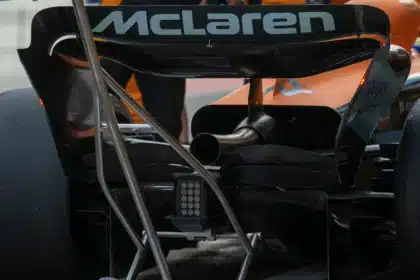 Can you tell this is a computer-generated image?
Can you tell this is a computer-generated image?
Photo: Porsche
What do Fortnite and the all-new 2022 Porsche 911 GT3 have in common? Both were built using the Unreal game engine. But while Porsche engineers might build staircases to heaven to get a better vantage point to shoot their enemies while relaxing after work, they use Unreal software technology for something a whole lot different while at the office.
Gaming tech in the auto industry is nothing new — for example, both Hyundai and Mercedes have close ties to GPU manufacturer Nvidia — but Porsche’s approach is a little different. Rather than use consumer electronics to make pretty infotainment interfaces or Nvidia AI to power self-driving features, Porsche is using Unreal to test real-world driving applications.
Porsche vs. Mercedes-Benz: How do the two luxury car brands compare?
“Game engines provide the technology to create the necessary environment for simulating driver assistance systems as a standard feature,” explained Frank Sayer, senior manager of virtual vehicle development at Porsche Engineering.
Porsche engineers are increasingly using game engines to test a multitude of real-world scenarios that may be inconvenient or unrealistic to test outside of a virtual environment. “Every scenario and every eventuality can be played out in this way,” the automaker says. “Even those that cannot be rehearsed in real life for safety reasons: the car in front brakes unexpectedly; an animal runs into the road; the sun blinds the on-board cameras.”
By using the Unreal engine, Porsche can test for every conceivable scenario. Ionut Tripon, who works for Porsche Engineering out of Romania, is part of a team that builds digital test tracks for the automaker — such as the stretch of Autobahn near the company’s factory in Stuttgart, Germany. “Our colleagues know every exit and every sign — even though they’ve never been there before,” Tripon says.
Porsche Tech: Learn more about the company’s other cool innovations  Porsche Taycan on a virtual A8 Autobahn.
Porsche Taycan on a virtual A8 Autobahn.
Photo: Porsche
Even testing itself is getting outsourced to technology. Instead of having an employee get into a simulation, why not let a computer perform many variations of the same test, all at the same time? Porsche is doing just that using Amazon Web Services to run parallel driving simulations on dozens of machines. “When thousands of simulated cars do their laps, the development time is drastically reduced,” the automaker explains.
However, it’s not just for testing. Game engines are now so good at generating realistic images that Porsche says it will begin using them to enhance the customer buying experience. Currently, the company is testing using virtual reality glasses to present customers a 3D simulation of their future vehicle, complete with all of the customizations they have selected.
Will computer games eventually replace real-world automotive testing altogether? Probably not, but they’ll play a big part in improving safety, and may soon become a normal feature as part of the car-buying process.
Kurt Verlin was born in France and lives in the United States. Throughout his life he was always told French was the language of romance, but it was English he fell in love with. He likes cats, music, cars, 30 Rock, Formula 1, and pretending to be a race car driver in simulators; but most of all, he just likes to write about it all. See more articles by Kurt.









